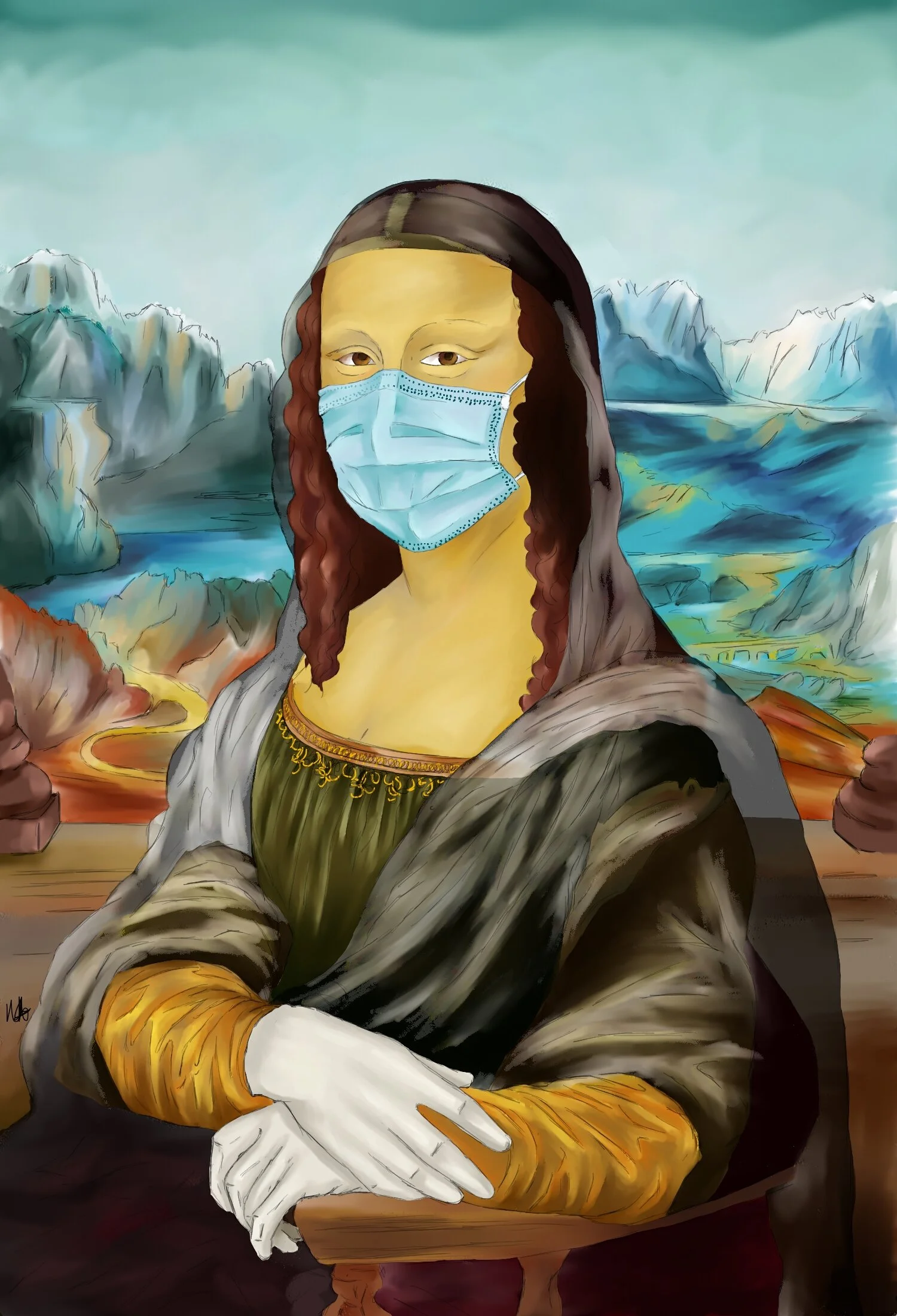How to protect yourself from coronavirus (COVID-19) on public transport
What is the Coronavirus?
By now we are all familiar with the term 'coronavirus'. The virus currently infecting people around the world is COVID-19. COVID-19 is a member of the coronavirus family, which has never been detected until now.
Coronaviruses (CoV) are a large family of viruses that cause illnesses ranging from the common cold to serious diseases such as severe acute respiratory syndrome. Coronaviruses are zoonotic, meaning they are transmitted between animals and people. COVID- 19 has currently infected thousands of people all around the world, is a member of this coronavirus family.COVID-19 is thought to be spread in a similar way to the common flu via small droplets of fluid from the nose and mouth – i.e. when sneezing or coughing – from someone that is infected.
It is thought the virus originated in Wuhan China.
Illustration by Nike Akinfenwa
What are the symptoms of COVID-19?
Common signs of infection have been reported to include fever, cough, shortness of breath and breathing difficulties. In more severe cases, the infection can cause pneumonia, severe acute respiratory syndrome, kidney failure and in some cases, death.
What are the Statistics on cases to date?
Statistics as of 10th April 2020, reported by the World Health Organisation.
Cases Globally
1 521 252 confirmed (new 85 054)
92 798 deaths (new 7277)
Europe Region
799 696 confirmed (new 40 035)
66 213 deaths (new 4697)
WHO RISK ASSESSMENT
Global Level Very High
Visit the World Health Organisation website for more regional statistics. The World Health Organisation report new statistics frequently and are a good source of factual information on what is really going on.
How to protect yourself on Public Transport ?
Travelling to work via the tube (or buses) during rush hour can be a stressful situation on the best of days. The new reality of coronavirus (COVID-19), is leaving many concerned and anxious about the transmission of the virus on their daily commute.
As we know, ‘coughs and sneezes spread diseases’…So, basic hygiene is critical in preventing the transmission and spread of the virus to yourself and others. Here are some of our simple good hygiene practices to reduce the risk of infection, whilst travelling on the tube or generally whilst out an about in London, or at work:
Wash your hands thoroughly before and after your commute. It is recommended a good hand wash with hot water and soap for at least 20 seconds.
Carry hand sanitiser, and one with at least 60% alcohol. As much as we would all love to avoid holding onto the handrails, or touching surfaces on the tube you still need to stay safe and stable, so just make sure you apply some hand sanitiser after touching surfaces.
Cover your nose when sneezing! Ideally into a tissue which is the best option, however if you don’t have a tissue to hand, sneeze into the crook of your elbow rather than onto your hands.
After blowing your nose or sneezing, dispose of used tissues as soon as possible.
Avoid touching your face, mouth or eyes with unwashed or infected hands. Although most of us tend to do this without thinking, it is the main route that the virus reach our bodies.
Visit the World Health Organisation for more advice on how to protect yourself from the Coronavirus (COVID-19).
Are face masks helpful?
Honestly, there are big debates on exactly this question. According to Dr David Carrington, of St George's, University of London, who recently had a chat with the BBC News.
"Routine surgical masks for the public are not an effective protection against viruses or bacteria carried in the air, which was how "most viruses" were transmitted, because they were too loose, had no air filter and left the eyes exposed. But they could help lower the risk of contracting a virus through the "splash" from a sneeze or a cough and provide some protection against hand-to-mouth transmissions.”
In a lot of ways a face mask can understand give a psychological sense of However the WHO are warning that a shortage in supplies could leave front line health workers at risk. We will leave the judgement up to you…
Click here for a comprehensive guide on how to make a DIY face masks at home.
What is the recommended advice?
The UK Chief Medical Officer has raised the risk to the public from low to moderate.
The NHS 111 has an online coronavirus service that can tell you if you need medical help and advise you on what to do.The NHS advise you use the service if:
You think you might have coronavirus
In the last 14 days you’ve been to a country or area with a high risk of coronavirus
You’ve been in close contact with someone with coronavirus
Most importantly, DO NOT go to a GP surgery, pharmacy or hospital. Call 111 if you need to speak to someone
The NHS urge people to use the 111 Coronavirus service if you have recently travelled to the UK from somewhere with a higher risk of coronavirus.
#FLODown: According to the World Health Organisation, COVID-19 spreads less efficiently than flu, transmission does not appear to be driven by people who are not sick, it causes more severe illness than flu, there are not yet any vaccines or therapeutics, and it can be contained – which is why we must do everything we can to contain it. That’s why WHO recommends a comprehensive approach.
On the 23rd March 2020, Boris Johnson addressed the nation advising everyone to stay home in a national effort to halt the growth of the virus.
Stay Home, Safe Safe.
Statistics updated 10th April 2020.












